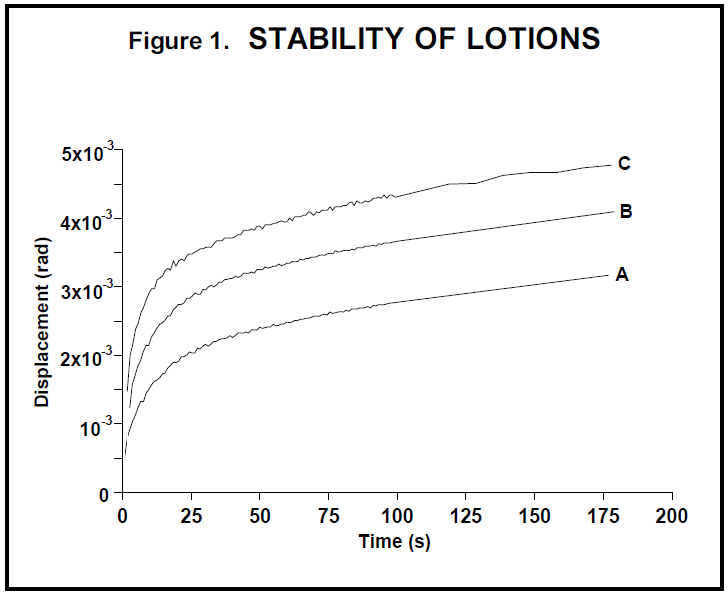STABILITY OF PHARMACEUTICAL LOTIONS
PROBLEM
Many pharmaceutical lotions are small particle suspensions where shelf life is determined by the particle settling rate on standing. A rapid test which predicts this long term property is therefore very desirable.
SOLUTION
Controlled stress rheology, particularly in the creep mode, is an ideal technique for making this stability measurement. Creep measures the deformation of a material under a constant force (stress) with time. In sedimentation, the force imparted on the suspension particles is gravity, and the steady state viscosity of the suspension’s continuous phase is the resistance to rapid settling. Using the Stokes equation, it is possible to calculate the force equivalent to gravity on a sperical particle of known diameter and to apply that force with the rheometer. Figure 1 shows the creep curves for three pharmaceutical lotion formulations. Lotion A has a shelf life (170 days) known to be unsatisfactory based on previous tests. Lotion B has a shelf life (250 days) known to be satisfactory. Lotion C has an unknown shelf life.

Each lotion was subjected to the same precalculated force while being held isothermally at 23°C (the normal storage temperature). After three minutes, all three lotions achieve a steady state viscosity. Using the steady state viscosity for Lotion B, namely 3442 Pascal seconds, and its known shelf life, it is possible to predict the shelf life of other similar lotions as shown:
Lotion A 2314 x 250 ÷ 3442 = 168 days
Lotion C 8801 x 250 ÷ 3442 = 639 days
Where: 2314 and 8801 are the steady state viscosities for
lotions A and C
250 is the shelf life for lotion B
3442 is the steady state viscosity for lotion B
These calculations agree well with the shelf life actually found for Lotion A. These results also predict that Lotion C should have an excellent shelf life of more than two years. This was confirmed by subsequent tests.

